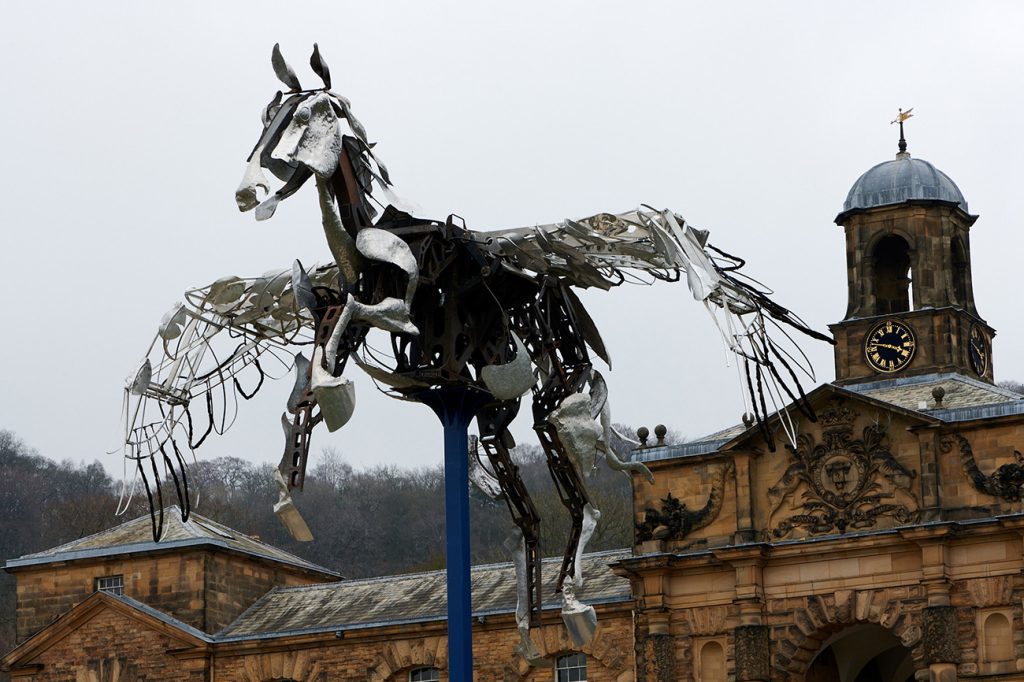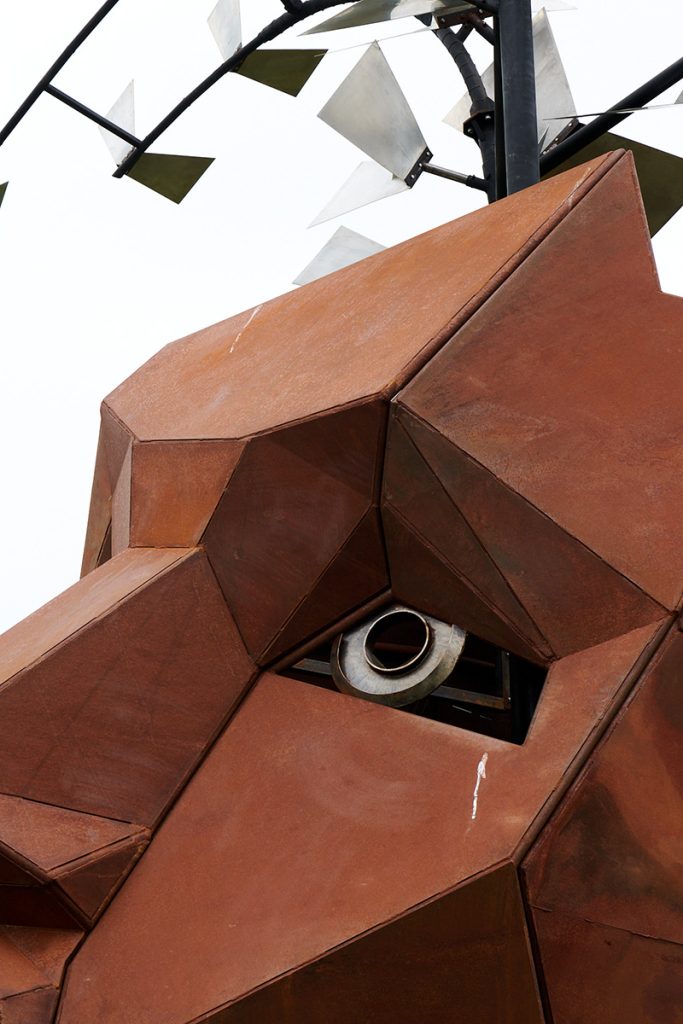If only we could have witnessed 18th-century landscape architect Capability Brown encountering the 20-foot tall steel bust that now presides over the entrance to Chatsworth House, where he laid out his fashionable designs for the 4th Duke of Devonshire. Or, have foretold the 12 contemporary artists of Nevada’s Burning Man festival, that their sculptures would be reimagined for this northern England parkland.
But here lies the premise of Radical Horizons: The Art of Burning Man at Chatsworth, an exhibition of monumental sculptures unveiled on the 1,000-acre grounds of the stately home. From the white heat and endless horizon of the Black Rock Desert, to the undulating sheep-grazed parkland of Derbyshire, this is a project about opening up new vistas of creative possibility. An invitation for previously unseen collaborations, ideas, processes, contexts and conversations. All underpinned by a philosophy of ‘making’.

Photography: Louise Long

Photography: Louise Long

Photography: Louise Long

Photography: Louise Long

Photography: Louise Long

Photography: Louise Long

Photography: Louise Long

Photography: Louise Long

Photography: Louise Long
The journey starts before you even know it – on the estate’s meandering drive, through deer-studded grassland, descending to the River Derwent. Soon enough, Chatsworth’s neoclassical facade wheels itself into view, foregrounded majestically not only by James Paine’s three-arched bridge but by Swedish artist Christina Sporrong’s giant steel non-binary head sculpture, The Flybrary. A cubist picture of contemplation – gazing skyward, with a dancing tiara of birds. Suddenly, this modelled landscape appears even more surreal.
From here the visitor chooses their path. Beckoning from the entrance to the 18th-century stable block (housing over 80 horses in its day) is NYC artist Adrian Landon’s Wings of Glory. A 4,000-lbs mechanical pegasus elevated 20 feet in the air, it is also a piece of signature Burning Man ‘fire art’, designed for added pyrotechnic spectacle.

Themes of animal metamorphosis and the supernatural ripple elsewhere, from Charles Gadeken‘s ‘murder’ of 100 crows to Mr and Mrs Ferguson’s mother and baby bear, Ursa Mater. (The artist couple married at Burning Man in 2011). Artist collective Therm presents Le Attrata, a trio of moths, a space-age three graces beautifully intricate despite their monumentality. Whilst in more muted tones, Bryan Tedrick’s Spread Eagle extends its wings
on the riverbank. Its central ring is the perfect size for an adult to stand in: a Vitruvius Man via the Nevada desert, now with a backdrop of wooded Derbyshire hills.

Across a dozen installations, some are pre-existing works, others modified iterations, and in the case of one – a new, site-specific work of floating boulders, designed by Californian Benjamin Langholz using locally quarried stone. A final trio of works are participatory – to be created with Burning Man artists in tandem with local communities throughout the summer; imbuing the exhibition with the spirit of volunteering that is at the heart of Burning Man. Dana Albany’s mermaid for the Chatsworth ice pond will be a tribute to local folklore, made with local school children from scrap metal and other donated materials.
From the charming to the psychedelic, each contribution is as surprising as the next, each held in excitable expectation for this new audience and context. And altogether, rejoicing in the common ground of creativity and community.


























